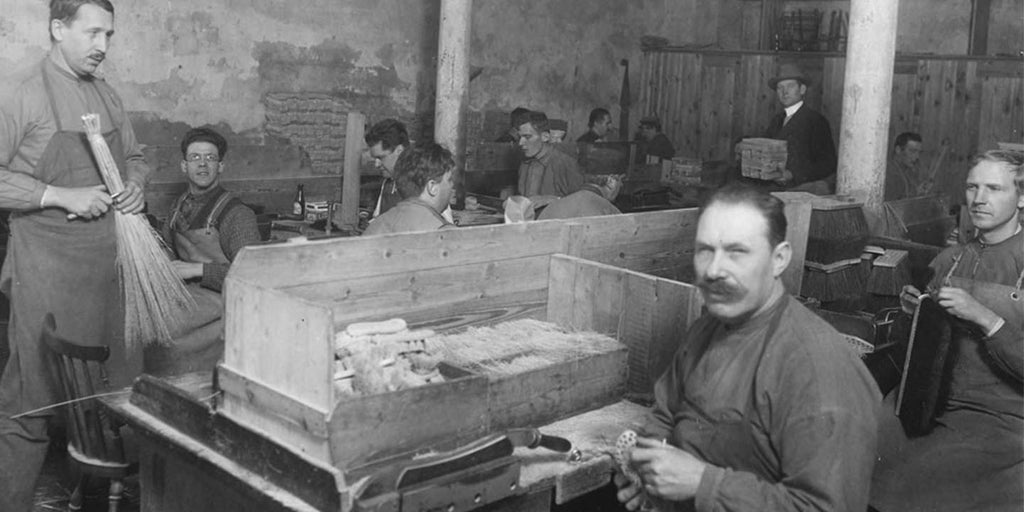



Iris Hantverk Face Brush
Iris Hantverk is a brand of tradition, built around the Swedish traditions of the late 19th century. Still a small company based in Stockholm, all brushes are still made by hand, using traditional technique, by five visually impaired craftsmen. With tradition in mind, all products are produced of the highest quality with simplistic Scandinavian design in mind. The Dry face brush is meant for dry use. The oak and goat hair are perfect for brushing a dry, clean face to gently exfoliate dead skin cells for a rejuvenated, fresh appearance. Massage with circular motions for 5 minutes once or twice a week, avoiding eyes and mouth.
Details
Made of oak and goat hair.
Dimensions: 6.9” x 1.8” x 1.2” (17.5 x 4.5 x 3cm) For dry use only.
Use once or twice weekly on a clean, dry face for optimal results.
The Facial Wet cleansing brushes remove dirt and makeup, and also gives a gentle exfoliation buffing off rough dead skin cells. It makes the skin softer and keeps the pores clean, and that help your skin better absorb your skincare product. Use the brush wet with your facial cleansing lotion to remove makeup. Use very light and gentle circular motions, avoiding the eye and mouth. At the first uses the brush might feel harsh to the skin but that will easy after a while when the skin gets use to the massage. Start to clean less sensitive areas like the forehead, chin and nose. Rinse the brush in lukewarm water while use so it softens you might also add a bit more facial cleanser.
If you have skin problems, consult your skin care therapist or dermatologist before using the brush.
Rinse the brush after use and let it dry on the bristles to avoid the water flowing through the wood. Clean the brush by putting a small amount of your cleansing cream, mild shampoo or soap in your palm and circulate the brush, then rinse and let dry.
If the wood in the brush starts to feel dry you can oil it with boiled cold pressed linseed oil, or some other oil suitable for wood.
Weight 40 g
Length 17,5 cm
Width 4,5 cm
Height 3 cm
Iris Hantverk
About The Designer

The core of the business is the brush binding manufacturing at Sandsborgsvägen, Enskede – here 5 visually impaired craftsmen from different cultures make brushes according to an old Swedish tradition. The company also works with visually impaired craftsmen in Estonia, whose craft and connection to the visually impaired movement parallel the brand.
Iris hantverk has strong ties to and share their history with the Visually impaired organization in Sweden, SRF. In November 1870, Dr. Axel Beskov took the initiative of founding the Manilla School - a workhouse for visually impaired craftsmen in Stockholm. Initially there were nine people, most of them lived at the workhouse. A large part of DBF work came to revolve around the development of support for the artisans and their ability to live off their work. In 1902 DBF, "De blindas förening", a political independent group founded by the craftsmen, decided that materials for brush binding and basket making would be purchased collectively in order to reduce prices and be sold to the visually impaired craftsmen for purchase price. In 1906, a property was purchased becoming an office and library, brush binding factory, warehouse for raw materials, sales of raw material and a shop – the beginnings of what Iris Hantverk is today.
Today, brushes are still made by hand and of mostly natural materials in Iris Hantverk’s exclusive designs; forging quality, tradition and expert craftsmanship.





